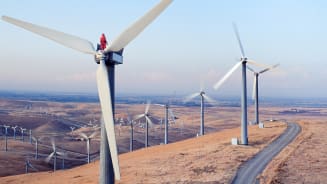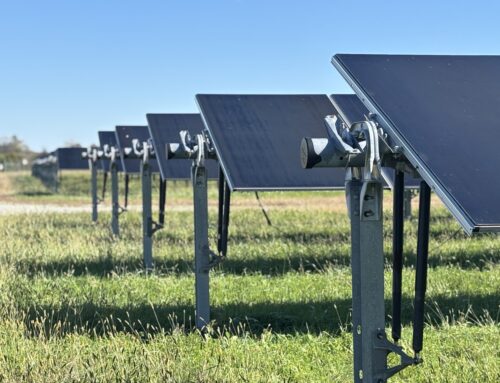Managing Technological Risk in the New Era of Advanced Gas Turbines
November 10, 2025
October 31, 2025 8 mins
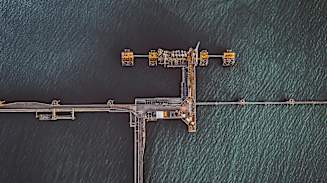
Aon has deep experience in natural resources industry – including alternative energy, chemicals, mining, oil and gas, power, renewables, and utilities.
The energy sector stands at a pivotal moment in history. As the global community races to decarbonise, reliable and efficient electricity generation remains a critical pillar supporting economic growth and societal needs. While renewable energy continues to gain prominence, gas-fired power generation — particularly combined cycle technology — remains a vital complement to variable renewables, offering dispatchable and stable capacity for energy transition.
In this environment, gas turbine manufacturers are fiercely competing to deliver the next leap in technology. The latest H- and J-class gas turbines have been engineered to achieve higher efficiency, larger power outputs, and lower emissions, offering customers the promise of lower total lifecycle costs. This aggressive technological innovation introduces new challenges — particularly for the insurance and financial communities responsible for underwriting project risk.
More Like This
The Push Toward Higher Efficiency and Lower Cost
Historically, gas turbines evolved gradually, with incremental improvements in thermal efficiency, capacity, and reliability. Recent market dynamics, including increasing competition from renewable energy sources, pressure to reduce the carbon footprint, and the need to lower electricity tariffs have forced OEMs to push beyond traditional engineering limits.
Today’s large-frame turbines offer significantly higher output and thermal efficiency compared to their predecessors. In parallel, EPC (Engineering, Procurement, and Construction) pricing for combined cycle plants has shown a downward trend, especially in competitive markets such as Asia Pacific. Modern combined cycle plants, which deploy advanced gas turbines, are now being delivered at significantly lower capital costs. The EPC pricing per kilowatt is notably below the levels typical of a decade ago.
OEMs have achieved this through a combination of scaling up turbine size, streamlining designs, optimising manufacturing processes, and in some cases, accepting razor-thin or even negative profit margins on initial equipment sales in order to secure long-term service revenues.
While this strategy can deliver immediate cost advantages to project developers, it also carries implications. Reducing margins on turbine sales may pressure OEMs to find cost savings elsewhere in the manufacturing and quality assurance processes. In some cases, quality gate checks originally intended to safeguard long-term performance, may be simplified or bypassed, introducing new layers of risk into already complex supply chains.
As new turbine models often involve novel materials, cooling techniques, or blade designs, their long-term behaviour under real-world operating conditions may not be fully understood when first deployed.
The Challenge of Insuring New Technology
From an insurance perspective, particularly Construction All Risks (CAR), Machinery Breakdown (MB), and Third Party Liability (TPL), new or significantly modified gas turbine models are typically classified as ‘unproven’ until they accumulate sufficient operational history.
Until then, insurers and reinsurers view such machines as carrying heightened technological risk. This can manifest in several ways:
Ultimately, this can jeopardise the bankability of a project. Financiers expect projects to carry comprehensive insurance while project developers push for predictable, reasonable insurance costs. When insurance becomes expensive, restricted, or unavailable, it raises red flags that can delay or derail project financial close.
Beyond technological uncertainties, projects deploying advanced gas turbines in emerging markets may also face elevated credit and political risks. These exposures — ranging from counterparty default and currency inconvertibility to regulatory instability and expropriation — can significantly impact the reliability of revenue streams and the enforceability of long-term contracts. These risks must be carefully assessed and mitigated to preserve project bankability. The introduction of advanced but unproven gas turbines creates a tension between the desire to embrace technological innovation and the need to manage project risks responsibly.
Crafting Solutions to Transfer Technological Risk
At Aon, we recognise that innovation should not come at the cost of insurability or project bankability. To bridge this gap, Aon has pioneered structured solutions that transfer technological risk back to the party best positioned to manage it — the OEM.
Rather than asking insurers to shoulder the uncertainty of unproven technology, our approach ensures that manufacturers stand behind their machines in a manner that satisfies both insurers and project sponsors. This is achieved through a combination of contractual undertakings, insurance structuring, and disciplined risk assessment processes.
Key components of our solution include:
- Operational Benchmarking: We work with technical experts and reinsurers to classify gas turbines based on their accumulated operating hours and performance records.
- Special Undertakings: Tailor for unproven turbine as part of the project sponsors’ contract structure, to close the gaps between the insurance market solutions against the bankable and prudent project sponsors’ requirement.
- OEM Risk Assumption: In certain cases, if adequate insurance cannot be secured at reasonable terms despite best efforts, the OEM may assume direct financial liability for losses attributable to their equipment. In parallel with technological risk transfer, Aon also supports clients in structuring credit and political risk insurance programs tailored to the unique challenges of each jurisdiction. These instruments protect against counterparty default, currency inconvertibility, expropriation, and other sovereign-related risks that can derail even technically sound projects and undermine project viability.
Through these mechanisms, projects can maintain insurance coverage aligned with lender expectations without absorbing disproportionate costs or unacceptable exclusions.
-
- OEMs are incentivised to stand behind their latest technology and can accelerate market adoption by removing barriers to financing.
- Insurers and reinsurers avoid being forced to underwrite unknown technological risks, preserving underwriting discipline and pricing stability.
Similarly, credit and political risk insurance can help align interests between sponsors, lenders, and host governments. By mitigating concerns around payment default, contract frustration, or adverse government actions, these solutions enable stakeholders to proceed with confidence even in jurisdictions with volatile regulatory or macroeconomic environments. This alignment is especially critical for accelerating energy infrastructure investment in frontier and developing markets.
By setting clear expectations around performance benchmarks and risk assumption, Aon’s solution promotes responsible innovation. OEMs are encouraged to ensure that their new models are thoroughly validated before widespread commercial deployment, contributing to better long-term outcomes for the industry as a whole.
Looking Forward
As the energy transition accelerates, the role of flexible, efficient, and low-emissions gas-fired power will remain crucial. The need for innovation is undeniable, but so is the need for robust risk management practices that safeguard the long-term viability of projects.
By thoughtfully transferring and managing technological risk, we can unlock the benefits of next-generation gas turbines without exposing stakeholders to unacceptable uncertainties.
At Aon, we are proud to support organisations to navigate this evolving landscape, embrace new technology with confidence, and build the energy systems of tomorrow.
The information provided in this publication is current as at the date of publication and subject to any qualifications expressed. Whilst Aon has taken care in the production of this publication and the information contained has been obtained from sources that Aon believes to be reliable, Aon does not make any representation as to the accuracy of information received from third parties and is unable to accept liability for any loss incurred by anyone who relies on it. The information contained herein is intended to provide general insurance related information only. It is not intended to be comprehensive, nor should it under any circumstances, be construed as constituting legal or professional advice. You should seek independent legal or other professional advice before acting or relying on the content of this information. Aon will not be responsible for any loss, damage, cost or expense you or anyone else incurs in reliance on or use of any information in this publication.
The contents herein may not be reproduced, reused, reprinted or redistributed without the expressed written consent of Aon, unless otherwise authorized by Aon. To use information contained herein, please write to our team.
-

Podcast
23 mins -

Podcast
14 mins -

Podcast
10 mins
Better Being Series: Discover the ‘Blue Zones’ Where People Live Longer
-

Podcast
20 mins -

Podcast
17 mins
Better Being Series: Are You Taking Care of Your Digital Wellbeing?
-

Podcast
19 mins
On Aon Podcast: Better Being Series Dives into Women’s Health
-

Podcast
29 mins -

Podcast
28 mins
On Aon’s Better Being Series: Mental Health and Creating Kinder Cultures
-

Podcast
25 mins -

Podcast
24 mins -

Podcast
25 mins
On Aon’s Better Being Series: Physical Wellbeing and Resilience
-

Podcast
23 mins
-

Article
8 mins
Thriving in an Interconnected World: How the C-Suite Embraces Uncertainty
-

Article
6 mins
Powering Progress: Collaborating to Build a Sustainable Future in Emerging Markets
-

Article
5 mins -

Article
7 mins
Why Humans Are the Essential Factor in the Success of Artificial Intelligence (AI)
-

Article
5 mins
Leveraging Research and Expertise to Strengthen Your HR Strategy for 2025 and Beyond
-

Article
5 mins -

Article
7 mins
The Role of Risk Management in the Age of Generative Artificial Intelligence
-

Article
7 mins -

Article
4 mins
Three Ways to Boost Value from Benefits: APAC Insights from LinkedIn
-

Article
2 mins -
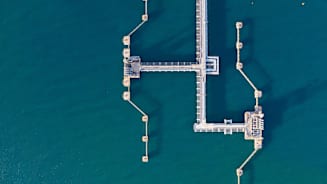
Article
11 mins -

Article
3 mins -

Article
3 mins
Understanding the Dynamics of Today’s Workforce — Reward, Retain, Evolve
-

Article
3 mins -

Article
10 mins
Unlocking Balance Sheet Value to Empower Your Business Strategy
-

Article
3 mins
Navigating the Unpredictable: Aon’s Suite of Actionable Analytics
-

Article
4 mins
Redefining Risk Capital as a Business Enabler: Veolia’s Innovative Approach
-

Article
9 mins -

Article
5 mins -

Article
6 mins
How Human Capital Data Enhances Risk Management for Financial Institutions
-

Article
4 mins
The Battle for Top Talent in the Professional Services Sector
-

Article
5 mins
Insights on a Volatile World — Risk Factors That Businesses Need to be Monitoring
-

Article
3 mins -
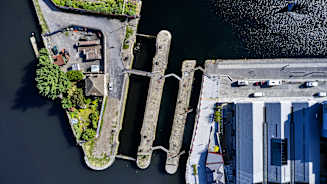
Article
10 mins -

Article
9 mins
How AI and Workforce will Intersect: Navigating Risks and Opportunities
-

Article
8 mins -
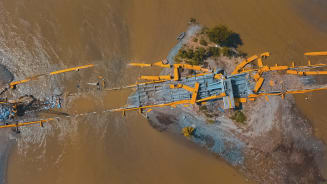
Article
9 mins -
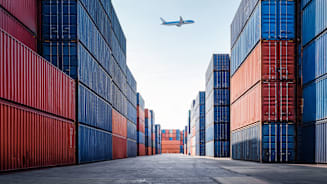
Report
13 mins -

Report
19 mins
Technology is Driving Firms to Harness Opportunities and Defend Against Threats
-

Report
19 mins
Climate Analytics Unlock Capital to Protect People and Property
-

Report
14 mins
A Workforce in Transition Prepares to Meet a Host of Challenges
-

Article
8 mins
How North American Construction Contractors Can Mitigate Emerging Risks
-

Article
7 mins -

Article
7 mins
Unlocking Capacity and Capital in a Challenging Construction Risk Market
-
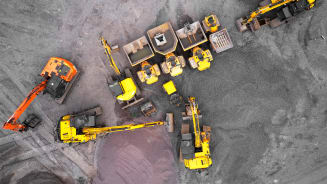
Article
7 mins
Protecting North American Contractors from Extreme Heat Risks with Parametric
-

Article
5 mins
How Climate Modeling Can Mitigate Risks and Improve Resilience in the Construction Industry
-

Report
1 mins -
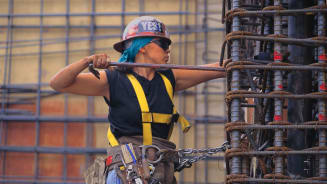
Article
8 mins
Parametric Can Help Mitigate Extreme Heat Risks for Contractors in EMEA
-

Article
9 mins -
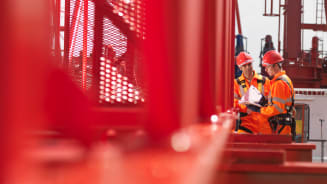
Article
11 mins
-

Cyber Labs
5 mins -

Cyber Labs
8 mins
Bring Your Own Installer: Bypassing EDR Through Agent Version Change Interruption
-

Cyber Labs
17 mins
Maximizing value: How companies and pentesters can achieve more together
-
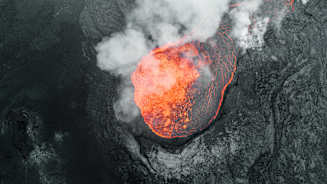
Cyber Labs
7 mins -

Cyber Labs
14 mins -

Cyber Labs
7 mins -

Cyber Labs
5 mins -

Cyber Labs
10 mins
Emerging Risks in Third-Party AI Solutions and How to Help Address Them
-

Cyber Labs
20 mins
Unveiling the Dark Side: Common Attacks and Vulnerabilities in Industrial Control Systems
-

Cyber Labs
9 mins -

Cyber Labs
6 mins
Optimizing Your Cyber Resilience Strategy Through CISO and CRO Connectivity
-

Cyber Labs
9 mins
Bypassing EDR through Retrosigned Drivers and System Time Manipulation
-

Cyber Labs
10 mins -

Cyber Labs
7 mins
Unveiling “sedexp”: A Stealthy Linux Malware Exploiting udev Rules
-

Cyber Labs
3 mins
Command Injection and Path Traversal in StoneFly Storage Concentrator
-

Cyber Labs
7 mins -

Cyber Labs
3 mins
Responding to the CrowdStrike Outage: Implications for Cyber and Technology Professionals
-

Cyber Labs
10 mins
DUALITY Part II – Initial Access and Tradecraft Improvements
-

Cyber Labs
17 mins -

Cyber Labs
57 mins
DUALITY: Advanced Red Team Persistence through Self-Reinfecting DLL Backdoors for Unyielding Control
-

Article
8 mins
Cyber and E&O Market Conditions Remain Favorable Amid Emerging Global Risks
-

Article
7 mins -

Article
9 mins
Building Resilience in a Buyer-Friendly Cyber and E&O Market
-

Article
11 mins -

Article
7 mins
Lessons Learned from the CrowdStrike Outage: 5 Strategies to Build Cyber Resilience
-

Article
8 mins
Responding to Cyber Attacks: How Directors and Officers and Cyber Policies Differ
-

Article
6 mins
Why Now is the Right Time to Customize Cyber and E&O Contracts
-

Article
6 mins
8 Steps Toward Building Better Resilience Against Rising Ransomware Attacks
-

Article
7 mins
Mitigating Insider Threats: Managing Cyber Perils While Traveling Globally
-

Article
4 mins -

Article
10 mins
Mitigating Insider Threats: Your Worst Cyber Threats Could be Coming from Inside
-

Article
9 mins -

Article
8 mins
Escalating Cyber Security Risks Mean Businesses Need to Build Resilience
-

Article
8 mins -

Article
6 mins -

Article
9 mins
Developing a Paid Leave Strategy That Supports Workers and Their Families
-

Article
9 mins
4 Ways to Foster a Thriving Workforce Amid Rising Health Costs
-

Article
9 mins -

Article
6 mins
Three Ways Collective Retirement Plans Support HR Priorities
-

Article
9 mins
How the Right Employee Wellbeing Strategy Impacts Microstress and Burnout at Work
-

Podcast
13 mins
On Aon Podcast: The Future of Healthcare: Key Factors Impacting Medical Trend Rates
-

Article
7 mins -

Article
7 mins
-

Article
11 mins -

Article
10 mins
Turning Uncertainty into Opportunity: Managing Risk in the EMEA Region
-

Article
10 mins
Latin America’s Risk Landscape: Turning Complexity into Competitive Advantage
-

Article
10 mins
Rethinking Resilience: Navigating North America’s Evolving Risk Landscape
-

Article
6 mins -

Article
7 mins
Business Interruption: Managing Risk in an Interconnected World
-

Article
6 mins -

Article
8 mins -

Article
5 mins
Increasing Competition Is Intensifying Risk for Organizations
-

Article
7 mins
Commodity Price Risk and Material Scarcity: An Escalating and Complex Risk
-
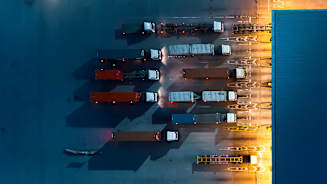
Article
9 mins
Supply Chain or Distribution Failure: Navigating the New Normal
-

Article
5 mins -
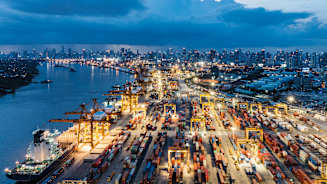
Article
6 mins -

Article
6 mins
-

Article
9 mins
Building Resilience to Support Growth in Construction and Real Estate
-

Article
10 mins
Managing Risk and Unlocking Opportunity in the Food, Agribusiness and Beverage Industry
-

Article
8 mins
Adapting to Disruption: How Financial Institutions are Reframing Risk
-

Article
10 mins
Turning Risk into Resilience in the Industrials and Manufacturing Industry
-

Article
11 mins
Navigating Risk in Insurance: Turning Complexity into Competitive Advantage
-

Article
10 mins
Navigating Risk in Life Sciences: Building Resilience to Support Growth
-

Article
11 mins
Navigating Volatility in Natural Resources: Risk Management as a Value Driver
-

Article
10 mins
Navigating Risk in Transportation and Logistics: Gearing Up for Big Transitions
-

Article
9 mins
Technology, Media and Communications: Rethinking Risk in a Shifting Landscape
-

Article
35 mins -

Article
13 mins
Medical Rate Trends and Mitigation Strategies Across the Globe
-

Article
9 mins
3 Strategies to Help Avoid Workers Compensation Claims Litigation
-

Podcast
15 mins
On Aon Podcast: Using Data and Analytics to Improve Health Outcomes
-

Article
14 mins
How Technology Will Transform Employee Benefits in the Next Five Years
-

Podcast
18 mins
On Aon Podcast: Technology Impacting the Future of Health and Benefits
-

Article
8 mins -

Podcast
24 mins -

Article
11 mins
Designing Tomorrow: Personalizing EVP, Benefits and Total Rewards
-

Article
12 mins -

Article
35 mins -

Article
20 mins -

Article
15 mins
How Artificial Intelligence is Transforming Human Resources and the Workforce
-

Article
15 mins -

Article
11 mins
Designing Tomorrow: Personalizing EVP, Benefits and Total Rewards
-

Article
10 mins -

Article
15 mins
-

Article
7 mins
COVID-19 has Permanently Changed the Way We Think About Wellbeing
-

Article
10 mins -

Article
10 mins -

Article
9 mins -

Article
7 mins -

Article
10 mins -

Article
5 mins -

Article
6 mins -

Article
7 mins
Rethinking Your Total Rewards Programs During Mergers and Acquisitions
-

Article
14 mins
Building a Resilient Workforce That Steers Organizational Success | An Outlook Across Industries
-

Article
8 mins -

Article
12 mins -

Article
8 mins -

Article
19 mins
3 Strategies to Promote an Inclusive Environment and Bridge the Gender Gap
-

Article
8 mins -

Article
12 mins
People Risks Are Rising: Here’s How U.S. Benefits Are Stepping Up
-

Article
8 mins -

Article
6 mins
Taking a Data-Led Approach to Job Architecture to Accelerate Pay Transparency
-

Podcast
12 mins
Better Being Series: Building Sustainable Performance in a Multi-Generational Workforce
-

Article
7 mins -

Article
7 mins -

Article
9 mins
4 Ways to Foster a Thriving Workforce Amid Rising Health Costs
-

Article
8 mins
Exit Strategy Value Creation Opportunities Exist as Economic Pressures Persist
-

Article
5 mins
Future Trends for Financial Sponsors: Secondary Transactions
-

Article
8 mins
3 Ways to Unlock M&A Value in a Challenging Credit Environment
-

Article
7 mins
Rethinking Your Total Rewards Programs During Mergers and Acquisitions
-

Article
9 mins
Organizational Design and Talent Planning are Key to M&A Success
-

Article
10 mins
An Ever-Complex Global Tax Environment Requires Strong M&A Risk Solutions
-

Article
5 mins
Project Management for HR: The Secret Behind a Successful M&A Deal
-

Article
8 mins -

Report
1 mins -

Report
2 mins
The ABC’s of Private Equity M&A: Deal Flow Impacts of Al, Big Tech and Climate Change
-

Article
11 mins
The Silver Lining on M&A Deal Clouds: M&A Insurance Insights from 2023
-
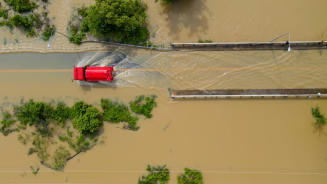
Article
10 mins
How Public Entities and Businesses Can Use Parametric for Emergency Funding
-

Article
6 mins
Parametric Insurance: A Complement to Traditional Property Coverage
-

Article
8 mins -

Article
6 mins
Using Parametric Insurance to Close the Earthquake Protection Gap
-

Article
5 mins
-

Article
6 mins
Taking a Data-Led Approach to Job Architecture to Accelerate Pay Transparency
-

Article
19 mins
3 Strategies to Promote an Inclusive Environment and Bridge the Gender Gap
-

Report
1 mins -

Article
10 mins
How Financial Institutions can Prepare for Pay Transparency Legislation
-

Article
8 mins -

Article
12 mins
Understanding and Preparing for the Rise in Pay Transparency
-

Podcast
14 mins -

Article
10 mins -

Article
6 mins
To Disclose Pay or Not? How Companies are Approaching the Pay Transparency Movement
-

Podcast
19 mins
On Aon Podcast: Better Being Series Dives into Women’s Health
-

Article
11 mins
Advancing Women’s Health and Equity Through Benefits and Support
-

Article
8 mins
Florida Hurricanes Not Expected to Adversely Affect Property Market
-
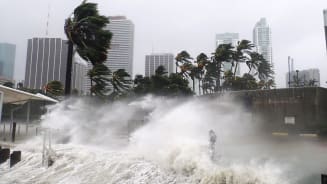
Article
10 mins
Build Resilience for an Extremely Active Atlantic Hurricane Season
-
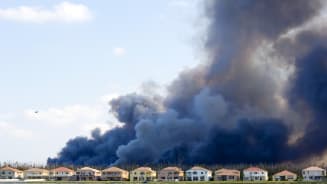
Article
4 mins
Four Steps to Develop Strong Property Risk Coverage in a Hardening Market
-

Podcast
16 mins -

Article
6 mins
Parametric Insurance: A Complement to Traditional Property Coverage
-

Article
4 mins -

Article
5 mins
Rising Losses From Severe Convection Storms Mostly Explained by Exposure Growth
-

Article
6 mins
Using Parametric Insurance to Close the Earthquake Protection Gap
-

Article
9 mins
How AI and Workforce will Intersect: Navigating Risks and Opportunities
-

Article
23 mins
The AI Data Center Boom: Strategies for Sustainable Growth and Risk Management
-

Article
8 mins -

Article
7 mins -

Article
15 mins -

Article
7 mins -

Article
15 mins
How Artificial Intelligence is Transforming Human Resources and the Workforce
-

Podcast
9 mins
On Aon Podcast: How has CrowdStrike Changed the Cyber Market?
-

Article
12 mins -

Article
12 mins
Navigating AI-Related Risks: A Guide for Directors and Officers
-

Article
5 mins -

Article
7 mins
How to Futureproof Data and Analytics Capabilities for Reinsurers
-

Article
10 mins -

Podcast
9 mins
Special Edition: Global Trade and its Impact on Supply Chain
-

Article
8 mins
The Evolving Threat of Cargo Theft: 5 Key Mitigation Strategies
-

Report
1 mins
Findings from Aon’s Global Risk Management Survey | Tenth Edition
-

Article
4 mins
Four Steps to Develop Strong Property Risk Coverage in a Hardening Market
-

Article
14 mins
Cutting Supply Chains: How to Achieve More Reward with Less Risk
-

Article
9 mins
Driving Private Equity Value Creation Through Credit Solutions
-

Article
7 mins
4 Steps to Help Take Advantage of a Buyer-Friendly Directors’ & Officers’ Market
-

Article
9 mins -

Article
8 mins
How an Outsourced Chief Investment Officer Can Help Improve Governance and Manage Complexity
-

Article
8 mins
Decarbonizing Your Business: Finding the Right Insurance and Strategy
-

Article
8 mins
-

Report
5 mins -

Report
8 mins
Chapter 2: North America: Highlights, Claims Severity and Frequency
-

Report
3 mins -

Report
24 mins -

Report
5 mins -

Report
5 mins -

Report
9 mins -

Report
7 mins
Chapter 8: EMEA: Notifications by Target Location and Claims Severity and Payment Trends
-

Report
10 mins -

Report
7 mins
Chapter 10: EMEA: Case Law, Insurer Survey, Claims Handling and Tax
-

Report
6 mins -

Report
9 mins
-

Article
9 mins -

Podcast
9 mins
On Aon Podcast: Climate Impact on the Property and Casualty Market
-

Alert
14 mins
L.A. Wildfires Highlight Urgent Need for Employee Support and Business Resilience
-

Report
2 mins -

Article
10 mins
How Public Entities and Businesses Can Use Parametric for Emergency Funding
-

Podcast
12 mins
On Aon Podcast: Tackling Climate Risk to Build Economic Resilience
-

Article
8 mins -

Podcast
9 mins
On Aon Podcast: Climate Science Through Academic Collaboration
-

Article
6 mins
How Companies Are Using Climate Modeling to Improve Risk Decisions
-

Article
8 mins -

Article
9 mins -

Article
9 mins
-

Article
4 mins
Using Data to Close Workforce Gaps in Financial Institutions
-

Article
5 mins -

Article
10 mins -

Article
4 mins
Using Data to Close Workforce Gaps in Manufacturing Companies
-

Article
6 mins
Using Data to Close Workforce Gaps in Life Sciences Companies
-

Report
4 mins -

Podcast
18 mins
On Aon Podcast: Methodology to Predict Employee Performance for the LPGA
-

Article
6 mins -

Article
14 mins
Building a Resilient Workforce That Steers Organizational Success | An Outlook Across Industries
-

Article
8 minsCyber Risk is the Weak Link in Data Center Construction
Data center construction is booming — but cyber risk management hasn’t kept pace. As digital infrastructure becomes ever more critical, fit-for-purpose insurance solutions are essential to protect projects from costly cyber events that derail timelines and budgets. -

Article
7 minsCaptives and Cyber: From Tactical Response to Strategic Risk Optimization
Captives are moving from a reactive stopgap to a core, strategic tool for managing cyber risk — helping organizations drive efficiency, manage volatility and build resilience in a rapidly evolving risk environment. -

Article
23 minsQ3 2025: Global Insurance Market Overview
Buyer-friendly conditions persisted in Q3, with ample capacity and intense competition driving continued price reductions and broader coverage for preferred risks, especially in property, cyber, and directors and officers.

Search
RECENT PRESS RELEASES
Sunrun sees 400% growth in virtual power plant participation
SWI Editorial Staff2025-11-10T12:28:30-08:00November 10, 2025|
Dominion Energy seeks its largest slate of solar and battery storage projects yet
SWI Editorial Staff2025-11-10T12:27:58-08:00November 10, 2025|
How AI’s Energy Demands Are Shaping the Future of Sustainable Investment
SWI Editorial Staff2025-11-10T12:27:35-08:00November 10, 2025|
Amazon Music’s Fan Groups are a refreshingly old-school way to share and find tunes
SWI Editorial Staff2025-11-10T12:26:37-08:00November 10, 2025|
Ring’s founder went from shoveling horse stalls to selling to Amazon for $1.15 billion and
SWI Editorial Staff2025-11-10T12:26:11-08:00November 10, 2025|
Early Black Friday Deal: 54% Off the Yeedi S14 Plus Robot Vacuum and Mop
SWI Editorial Staff2025-11-10T12:25:45-08:00November 10, 2025|
Related Post







